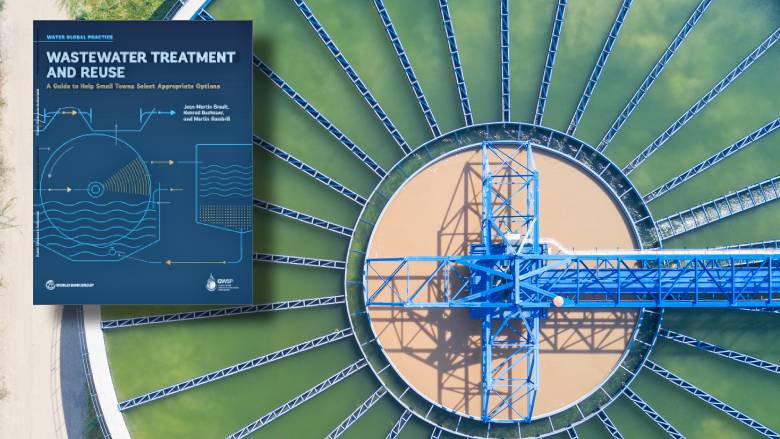Enhanced Waste Water Treatment Solutions for Lasting Water Management
Enhanced Waste Water Treatment Solutions for Lasting Water Management
Blog Article
Strategic Approaches to Enhance Waste Water Treatment Performance and Minimize Environmental Effect
In the realm of waste water treatment, the pursuit for improved efficiency and lowered ecological influence is a perpetual challenge that requires tactical remedies. The combination of advanced therapy innovations, energy-efficient procedures, resource recuperation methods, enhanced nutrient elimination techniques, and clever monitoring and control systems stands for a multifaceted structure for dealing with these pushing issues.
Advanced Therapy Technologies
Advanced membrane layer filtration systems have actually transformed innovative wastewater treatment processes, significantly improving the elimination of pollutants. These ingenious systems work by forcing water with a semi-permeable membrane layer, effectively separating pollutants from the water stream. The membrane's microscopic pores catch contaminants such as germs, infections, and put on hold solids, enabling only detoxified water to go through. This modern technology has actually proven to be extremely reliable in removing a wide variety of pollutants, consisting of pharmaceuticals, heavy steels, and natural substances, which are typically testing to eliminate through standard treatment methods.
Additionally, membrane layer filtering systems use many benefits over traditional therapy approaches. They require less room, generate higher-quality effluent, and are extra immune to fluctuations in influent water high quality. In addition, these systems are highly functional and can be easily integrated into existing therapy plants or made use of as standalone devices for decentralized applications. As the need for tidy water remains to rise, the adoption of advanced membrane layer filtering innovations is necessary to make sure efficient and sustainable wastewater therapy methods.
Energy-Efficient Procedures
The combination of energy-efficient procedures in wastewater treatment systems is vital for optimizing source use and minimizing functional expenses. One essential technique to improving energy effectiveness in wastewater therapy is the application of advanced aeration systems, such as fine bubble diffusers or surface aerators, which can improve oxygen transfer effectiveness and minimize energy usage.
Moreover, maximizing procedure control and automation via the usage of innovative sensors and checking systems can enhance general energy effectiveness by changing operations in real-time based on actual need and problems. Applying power audits and frequently keeping track of energy performance indicators are important practices to determine areas for improvement and track energy-saving initiatives effectively. Overall, the adoption of energy-efficient procedures in wastewater therapy not just profits the atmosphere however also adds to long-lasting cost savings and functional sustainability.
Source Healing Techniques
With a focus on optimizing source usage and sustainability in wastewater treatment systems, the execution of source recovery strategies becomes an essential aspect in boosting operational efficiency. Source healing techniques in wastewater therapy include the identification and removal of useful resources from the waste stream, therefore transforming what was once considered waste right into a useful possession. By executing source recovery techniques such as nutrient elimination and recovery, energy generation from raw material, and the production of reusable water, wastewater therapy plants can minimize ecological impact while making best use of effectiveness.

Improved Nutrient Removal Strategies
Applying innovative nutrient elimination techniques is vital for enhancing the efficiency of wastewater therapy systems. Improved nutrient removal plays an important role in minimizing the ecological effect of treated effluent released into water bodies. One of the vital methods utilized for enhanced nutrient elimination is the process of organic nutrient elimination (BNR), which involves the elimination of nitrogen and phosphorus with organic procedures. This can be achieved through making use of specialized microbes that can convert nitrogen compounds right into inert nitrogen gas with denitrification, and accumulate phosphorus within their cells via a process called boosted biological phosphorus elimination (EBPR)

In addition to BNR, advanced treatment methods such as membrane bioreactors (MBRs) and constructed wetlands can also be employed to enhance nutrient removal effectiveness. By including these advanced nutrient removal techniques right into wastewater therapy markets, districts and systems can properly lower nutrient air pollution and secure the atmosphere.
Smart Monitoring and Control Equipment
Making use of innovative innovation, the integration of smart surveillance and control systems reinvents the operational performance of wastewater therapy facilities. These systems include sophisticated sensors and information analytics to constantly keep track of key criteria such as pH levels, turbidity, dissolved oxygen, and circulation rates in real-time. By accumulating and examining this data, drivers can get important understandings into the efficiency of the treatment procedures, allowing positive modifications to enhance therapy effectiveness.
Smart surveillance and control systems also support remote surveillance abilities, permitting operators to accessibility real-time data and my explanation control features from off-site locations. This remote accessibility improves functional versatility and responsiveness, making it possible for quick interventions in situation of system malfunctions or changes in influent quality. The anticipating maintenance capabilities of these systems assist prevent devices failings and lessen downtime, eventually boosting the overall dependability of wastewater therapy operations.
Conclusion
To conclude, strategic methods such as sophisticated therapy modern technologies, energy-efficient processes, resource recovery strategies, enhanced nutrient removal methods, and wise surveillance and control systems play an important duty in boosting wastewater therapy performance and minimizing environmental impact. By executing these methods, wastewater treatment plants can enhance their general performance, decrease energy usage, recover important resources, and guarantee compliance with environmental guidelines. These techniques are go to these guys crucial for sustainable and efficient wastewater administration practices.

In conclusion, critical strategies such as innovative treatment innovations, energy-efficient processes, source healing strategies, improved nutrient removal methods, and clever tracking and control systems play a crucial role in improving wastewater therapy efficiency and lessening ecological impact.
Report this page